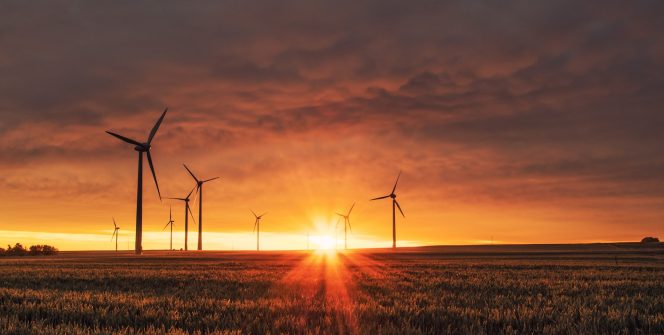Renewable energy is set to play a critical role in a new, sustainable green economy. Rather than burning fossil fuels to power our homes and businesses, we should be using methods of power generation that harness natural forces like solar radiation, gravity, and the wind.
The government aims for wind energy to power every home in the UK by the end of the decade. This means around 50 gigawatts from offshore wind. But what about the environmental costs inherent in creating a wind turbine? After all, don’t we need to smelt steel – an extremely carbon-intensive process – to build new turbines? In this article, we will explore how the wind turbine has constructed while focussing on the sustainable materials.
Overview of Wind Turbine Construction
According to researchers in the US, the average wind turbine is around two-thirds steel (66-79% by mass), with the remainder being made up of plastic (11-16%), iron (5-17%), copper(1%) and aluminium(0-2%). Of course, these materials don’t just need to be manufactured, but transported and put together – all of which amounts to a significant up-front carbon cost.
Because of the presence of non-recyclable materials like fibreglass, many wind turbines end up in landfill once they reach the end of their productive lives. This means, typically, around two decades of use before they need to be disposed of. As such, there are considerable environmental drawbacks worth weighing against any saving.
Sustainable Materials in Wind Turbine Construction
Of course, the above list of materials isn’t fixed. There exist organisations that seek to design something greener. One of the proposed alternatives might seem obvious: timber.
Wood not only avoids the carbon footprint of steel, but it can be transported piecemeal, which limits shipping costs. Treated timber is exceptionally resilient, and the initial results look promising.
One of the responsible companies, Modvion, has developed a kind of veneered timber that’s stronger than steel per kilogram. It can be sourced locally, which eliminates the problem of transporting steel over great distances. One estimate holds that a single timber tower can save around 2,000 tonnes of carbon equivalent.
Insulation Installation Best Practices
Of course, one of the best ways to limit the environmental impact of our energy generation is to ensure that we don’t use as much of it. One of the most effective ways to do this is through insulation. Effective insulation not only enhances energy efficiency but also promotes a more comfortable and sustainable way of living. Therefore, buildings can significantly reduce their energy consumption for heating and cooling, leading to lower greenhouse gas emissions. Moreover, proper insulation can also help prevent moisture issues and mold growth that aids the overall longevity of structures.
Getting the most out of your insulation means choosing the right variety, making sure that it isn’t compressed, and plugging any gaps and joins to prevent moisture from finding its way in. You can ask for a professional inspection in your building to identify potential weak points and ensure proper installation.

Leave a Reply